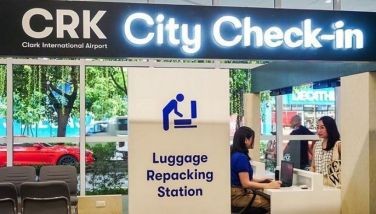Redistricting Cebu, administratively right, politically contentious
I was asked to fly to Harvard University to speak before a group of Fil-Am students, who are taking up doctorate degrees in Political Science, and I was asked to present a paper on redistricting Cebu. Five of the graduate students have parents coming from our province and so, they asked me how to rearrange the municipalities and cities among the seven congressional districts in the province. This is purely academic and nothing political.
I started my thesis on the current unequal representation among the seven congressional districts. The first district has a population of 809,335 as of the 2020 census. Let us just assume that in 2025, this can reach 900,000. Just imagine that the neighboring second district has a population of only 257,658 that can reach 300,000 in 2025. That means that the population of the second district is only one third of that of the first district. Yet, the representatives of the two districts receive the same salaries, allowances and privileges. This violates the principle of equal pay for equal work. The disparity between the first and the second districts is only based on population. We are not yet talking about income. On assets, the first is a giant, and the second is a dwarf.
Comparing the first district with the seventh district, which has only a small population of 238,699 or a projected 280,000 by 2025, the disparity becomes more pronounced. It was therefore my proposal, for academic discussion only, that the big municipality of Sibonga should be ceded to the second district. Anyway, in the old times, Sibonga was part of the old fourth district together with three other towns then called SAAD or acronym for Sibonga, Argao, Alcoy and Dalaguete. And I also proposed that Argao and Dalaguete should be developed to become component cities because they almost have the required population and annual income. But today, it seems that all developments are pouring into the north. The south, where both the governor and the vice governor come from, has always been the less favored.
It was also my proposal that the big town of Barili be ceded to the seventh district and removed from the third. Barili and Dumanjug can be developed into future component cities because they have the strongest potential to qualify based on annual income and total population. Whatever remains of the third can still stand strong with the city of Toledo and the next city which is Balamban. Remember that the provincial Capitol is being built there. I have complete figures on incomes and populations as well as socio-economic profiles of each town and component cities. The students and their faculty advisers were in agreement with my technical and administrative analysis. But they also agree with me that, given the leadership of politics in Cebu today, what I am proposing is just an academic ideal. Politically, it is bound to irritate the trapos who do not want to disturb their comfort zones.
I also called attention to the towns of Consolacion and Cordova, now constituting the sixth district, with a combined population of only 218,607 or projected to reach 240,000 in 2025. This is the undesirable result of the most untenable act of gerrymandering in Cebu. I propose that these two towns be combined with the fifth district. Once we add the 218,607 population of these two towns to the current total of the fifth, which is 643,946, it will become bigger than today's first district with 809,335. Thus, I proposed that the new fifth district be divided into two, the towns of Cordova, Consolacion, Compostela, and Liloan should constitute the new sixth district with all the four LGUs to be developed into component cities. Danao and all the rest shall remain as the fifth district, with accelerated development of the Camotes Islands to become a future sub-province.
These are all academic discussions. I know the current politicians will only sneer at or laugh at these. But nothing is impossible. In the fifties when the late Serging Osmeña envisioned a bridge to connect Cebu and Mactan, all the trapos laughed at him. It took a Senator Rene Gandiongco Espina to work for its realization in the sixties and early seventies. All the rest is history. The Harvard guys want me to go back to talk more about Cebu, Bohol, Negros and Siquijor. They also pick my brains on why the provincial Capitol is being built in Balamban of all places. The Fil-Ams in Harvard seem to be amused with my academic theories and opinions. They want me back. And sure, I shall be there again.
- Latest



















